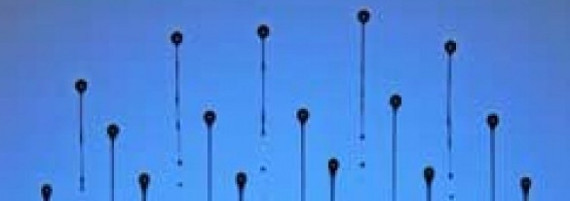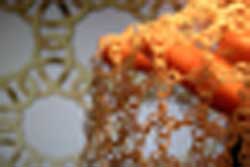IfM research associate wins Epson Photography Competition at the Department of Engineering

|
|
IfM research associate Dr Steve Hoath from the Inkjet Research Centre has won the Epson Photography Competition held recently at the Department of Engineering.
Steve's winning photograph, entitled 'Tails from the nozzle bank', was taken during a series of experiments at the IfM's Inkjet Research Centre investigating the performance of inkjet printers. It shows ink drops emerging from a bank of inkjet nozzles (just visible at the bottom of the picture). The image is about 2.3 mm across, the drop heads are 50 microns across and the tails are less than 10 microns wide (10 times thinner than a human hair). The drops are moving at around 6 m/s and are in three groups with slightly different drop firing times. In some cases the drops are still attached to the nozzles by long ligaments of stretching liquid. Other drops show separation and the formation of smaller, 'satellite' drops from the collapsing ligaments. This image was adjusted for brightness and contrast and rotated for effect.
Steve will receive the first prize of an Epson Stylus Photo R2400 top of the range professional photo printer that has been generously donated by Epson.
The IfM also took 2nd prize with 4th year MET student Laura Harrison's photograph of prototypes of elastic chain-link designs. These designs are part of her fourth year project within the Production Processes Group, investigating the potential for using 'Selective Laser Sintering' processes to produce textile structures, as part of wider research to establish new garment manufacturing techniques. A chain-link structure enables the creation of flexible textile structures from rigid materials, whilst related projects within the IfM are investigating the possibility of using biological materials such as silk to allow the creation of fibrous Rapid Manufacturing materials. The elasticity of the nylon used for this prototype can also be exploited to create links which stretch under an applied force.












